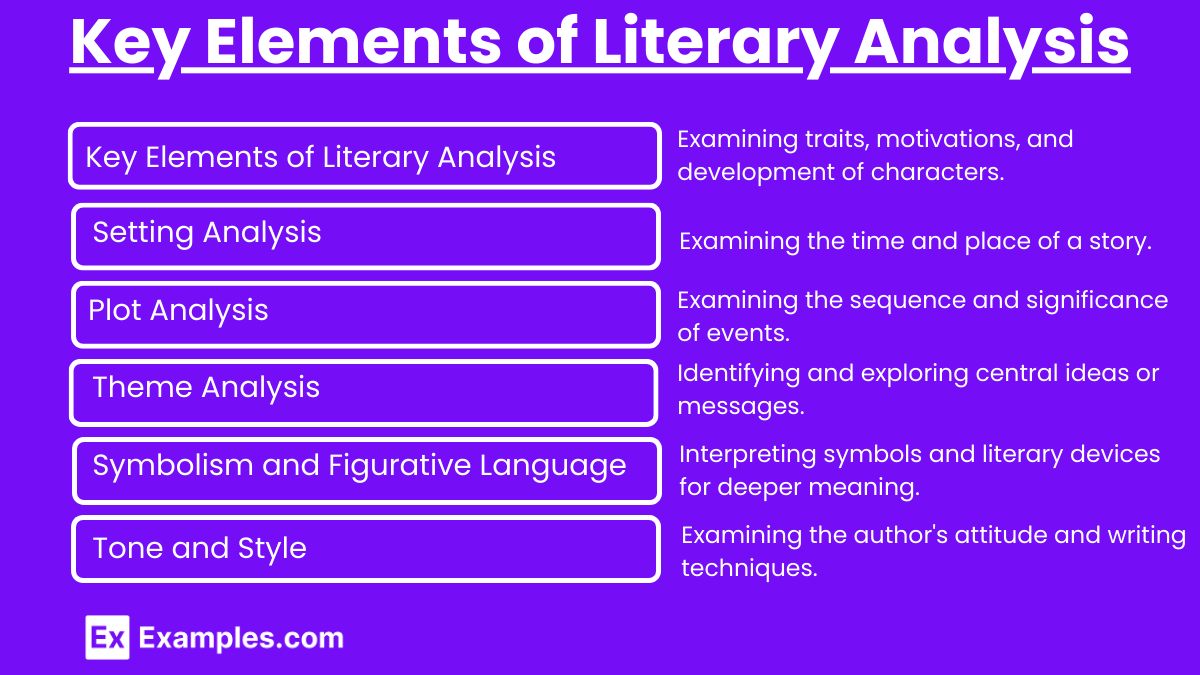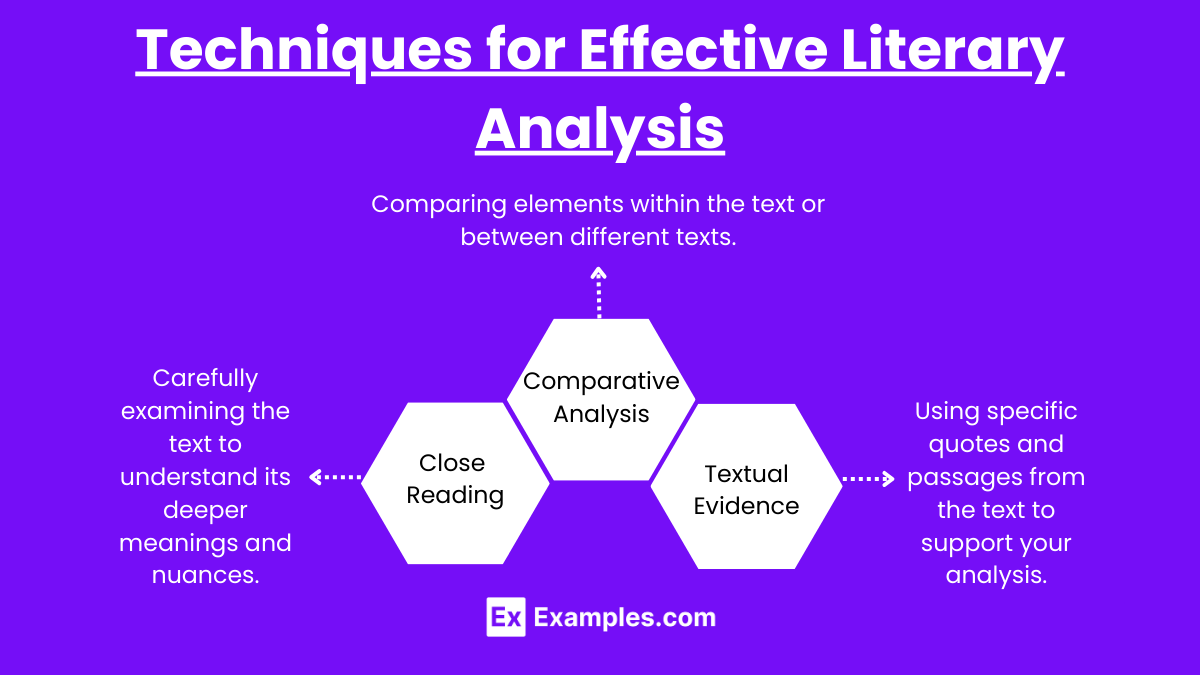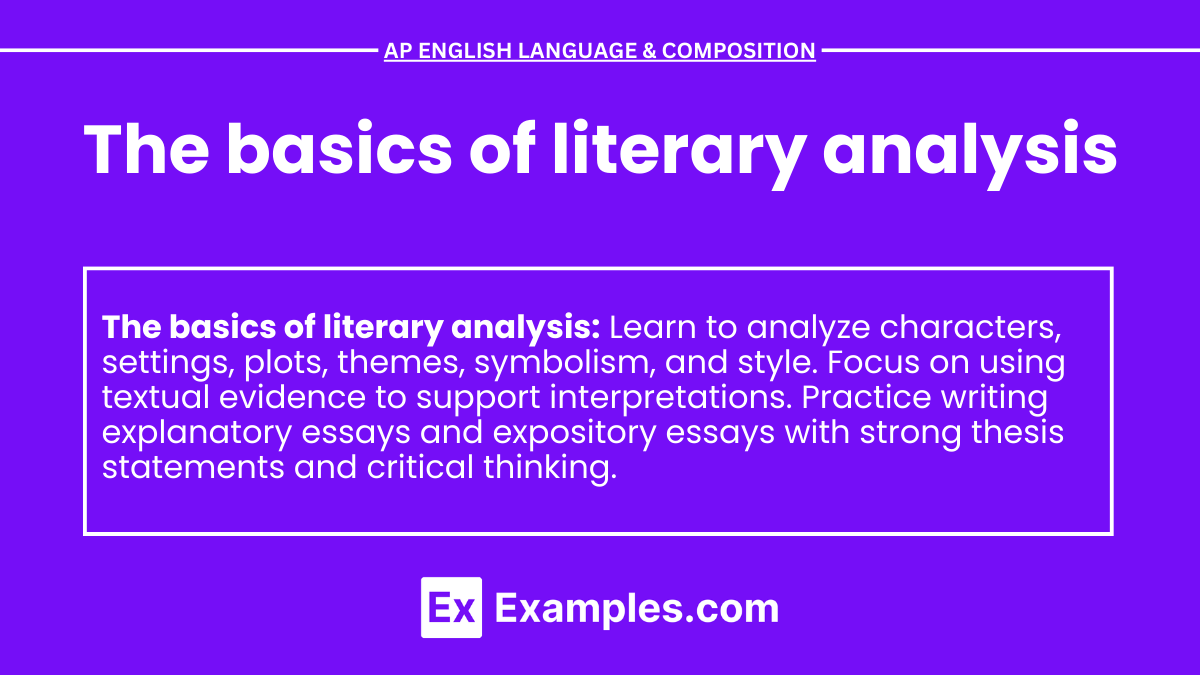In the AP English Language and Composition exam, mastering the basics of literary analysis is crucial for developing insightful and persuasive essays. Whether engaged in argumentative writing or delivering an argumentative speech, understanding how to analyze characters, settings, plots, themes, symbolism, and style allows you to use rhetorical sentences and cumulative sentences effectively. Literary analysis involves examining a text closely to uncover deeper meanings and themes, enabling you to craft well-supported arguments and provide nuanced interpretations of literary works. By honing these skills, you can enhance your critical thinking and writing abilities, making your analyses more compelling and thorough.
Learning Objectives
By studying the basics of literary analysis, students will achieve several key learning objectives. They will enhance their critical thinking skills by examining how characters, settings, plots, themes, symbolism, and style contribute to a text’s meaning. Students will learn to use cumulative sentences and rhetorical sentences to develop thorough analyses in explanatory essays and expository essays. They will also develop the ability to craft a strong final thesis statement that effectively incorporates their interpretations of the literary elements. Mastery of these techniques will enable students to produce well-structured, engaging, and persuasive literary analyses.
Key Elements of Literary Analysis

1. Character Analysis
- Definition: Examining the traits, motivations, and development of characters in a story.
- Techniques:
- Direct Characterization: Identifying explicit descriptions given by the narrator.
- Indirect Characterization: Analyzing a character’s actions, dialogue, and interactions with others.
- Example: In “To Kill a Mockingbird,” analyze Scout Finch’s growth from innocence to a deeper understanding of human nature.
2. Setting Analysis
- Definition: Exploring the time and place in which the story occurs and how it affects the narrative.
- Techniques:
- Descriptive Details: Noting descriptions of the environment, era, and cultural context.
- Impact on Characters and Plot: Understanding how the setting influences events and character behavior.
- Example: In “The Great Gatsby,” the setting of 1920s America highlights themes of decadence and the American Dream.
3. Plot Analysis
- Definition: Examining the sequence of events in the story and their significance.
- Techniques:
- Exposition, Rising Action, Climax, Falling Action, Resolution: Identifying these stages in the plot.
- Conflict and Resolution: Analyzing the central conflict and how it is resolved.
- Example: In “Hamlet,” the plot revolves around Prince Hamlet’s quest for revenge and its tragic consequences.
4. Theme Analysis
- Definition: Identifying the central ideas or messages in a literary work.
- Techniques:
- Recurring Motifs and Symbols: Noting symbols and motifs that support the theme.
- Character and Plot Contributions: Understanding how characters and events develop the theme.
- Example: In “1984,” the theme of totalitarianism is explored through the oppressive regime of Big Brother.
5. Symbolism and Figurative Language
- Definition: Analyzing the use of symbols and figurative language to convey deeper meanings.
- Techniques:
- Metaphors, Similes, Personification: Identifying and interpreting these devices.
- Symbolic Objects and Actions: Recognizing objects or actions that represent larger concepts.
- Example: In “The Scarlet Letter,” the scarlet letter “A” symbolizes both sin and redemption.
6. Tone and Style
- Definition: Examining the author’s attitude and the way they use language.
- Techniques:
- Diction, Syntax, Imagery: Analyzing word choice, sentence structure, and descriptive language.
- Narrative Voice: Identifying the narrative perspective and its effect on the story.
- Example: In “Pride and Prejudice,” Austen’s witty and satirical tone critiques societal norms.
Techniques for Effective Literary Analysis

Close Reading
- Definition: Carefully examining the text to understand its deeper meanings and nuances.
- Technique: Highlight key passages and annotate with notes on character, setting, plot, themes, and style.
Textual Evidence
- Definition: Using specific quotes and passages from the text to support your analysis.
- Technique: Integrate quotes smoothly into your analysis, providing context and explanation.
Comparative Analysis
- Definition: Comparing elements within the text or between different texts.
- Technique: Identify similarities and differences to draw deeper insights.
- Example: Compare the themes of ambition in “Macbeth” and “The Great Gatsby.”
Examples
Example 1: Character Analysis in “To Kill a Mockingbird”
- Character: Atticus Finch
- Analysis: Examine how Atticus’s moral integrity and sense of justice influence his actions and relationships.
- Textual Evidence: Use quotes from Atticus’s courtroom speech to illustrate his principles.
Example 2: Symbolism in “The Great Gatsby”
- Symbol: The green light
- Analysis: Explore how the green light represents Gatsby’s hopes and dreams for the future.
- Textual Evidence: Use descriptions of Gatsby staring at the light to support your interpretation.
Example 3: Theme Analysis in “1984”
- Theme: Surveillance and totalitarianism
- Analysis: Discuss how Orwell portrays the dangers of government surveillance and loss of individuality.
- Textual Evidence: Cite instances of Big Brother’s control over citizens’ lives.


